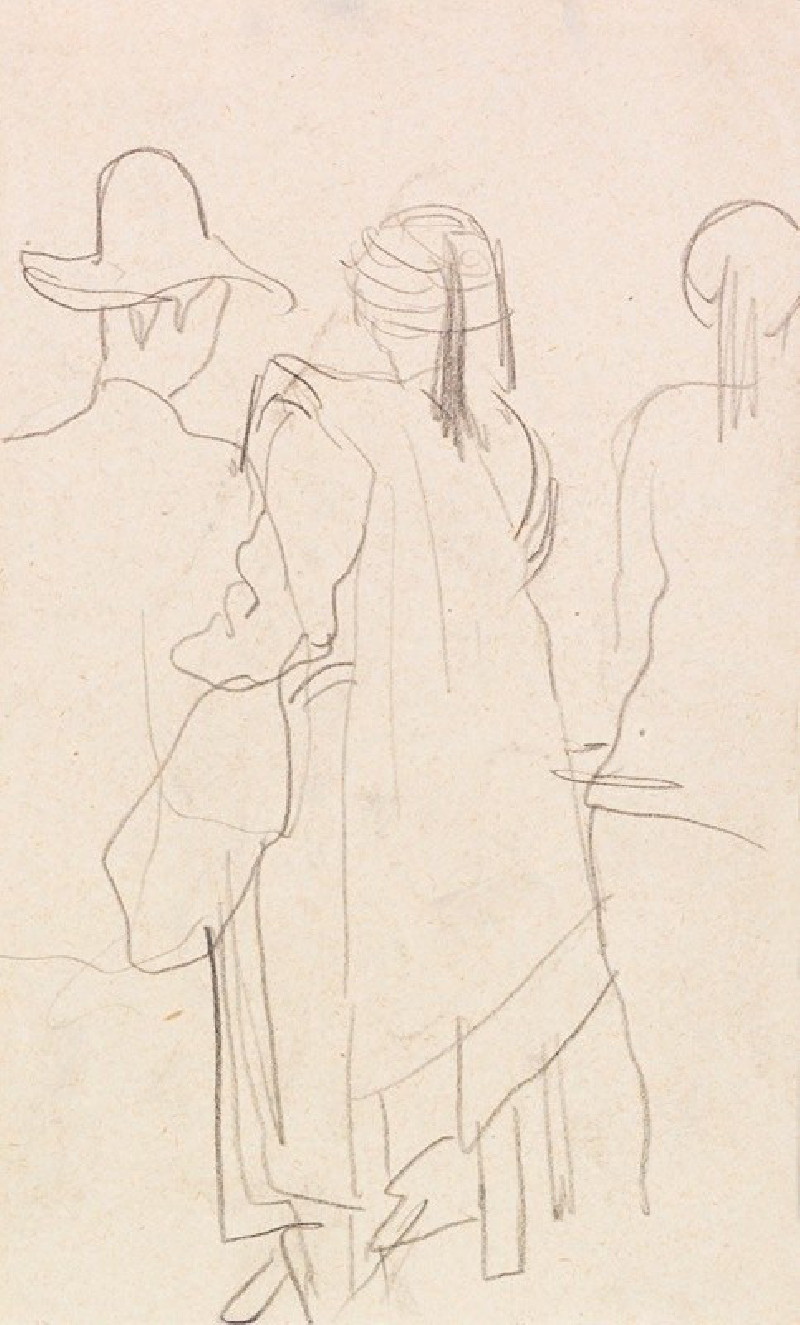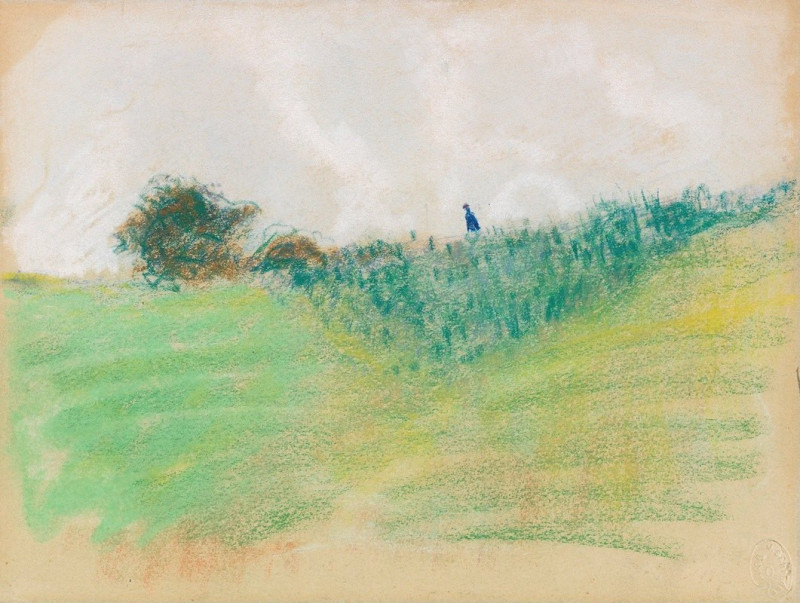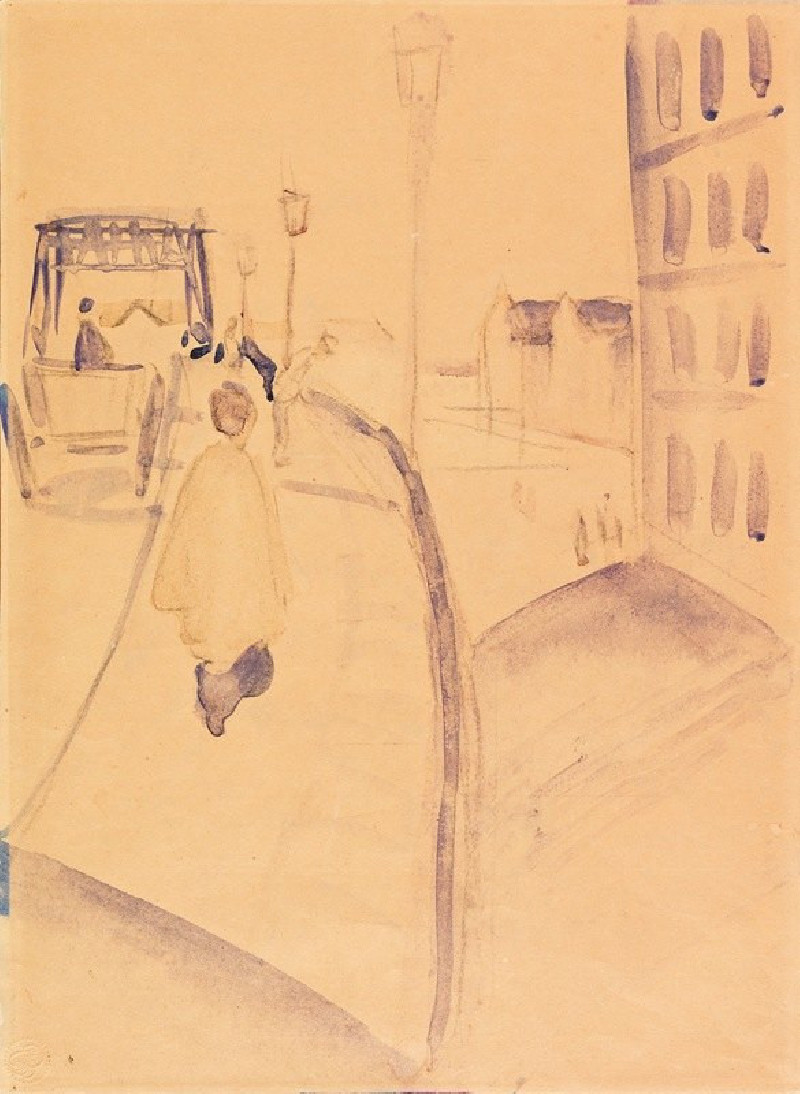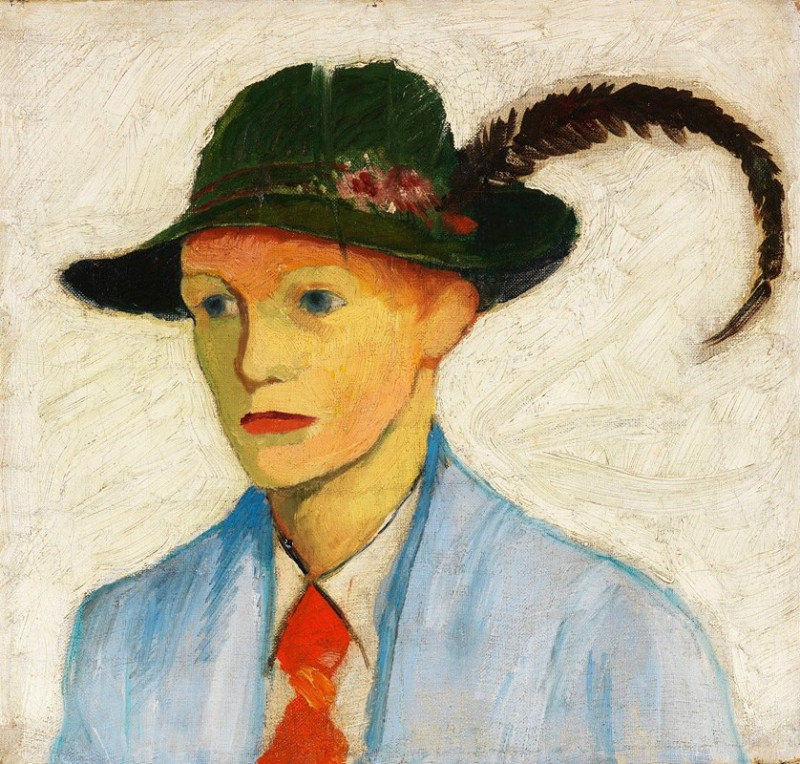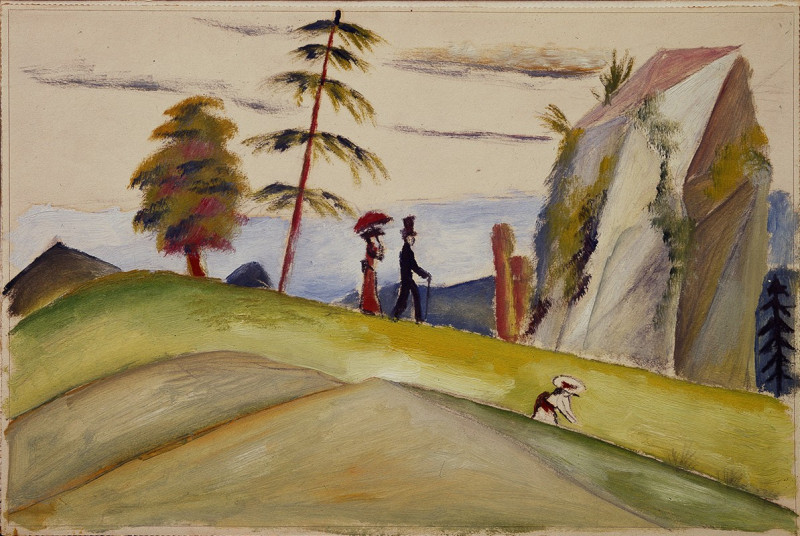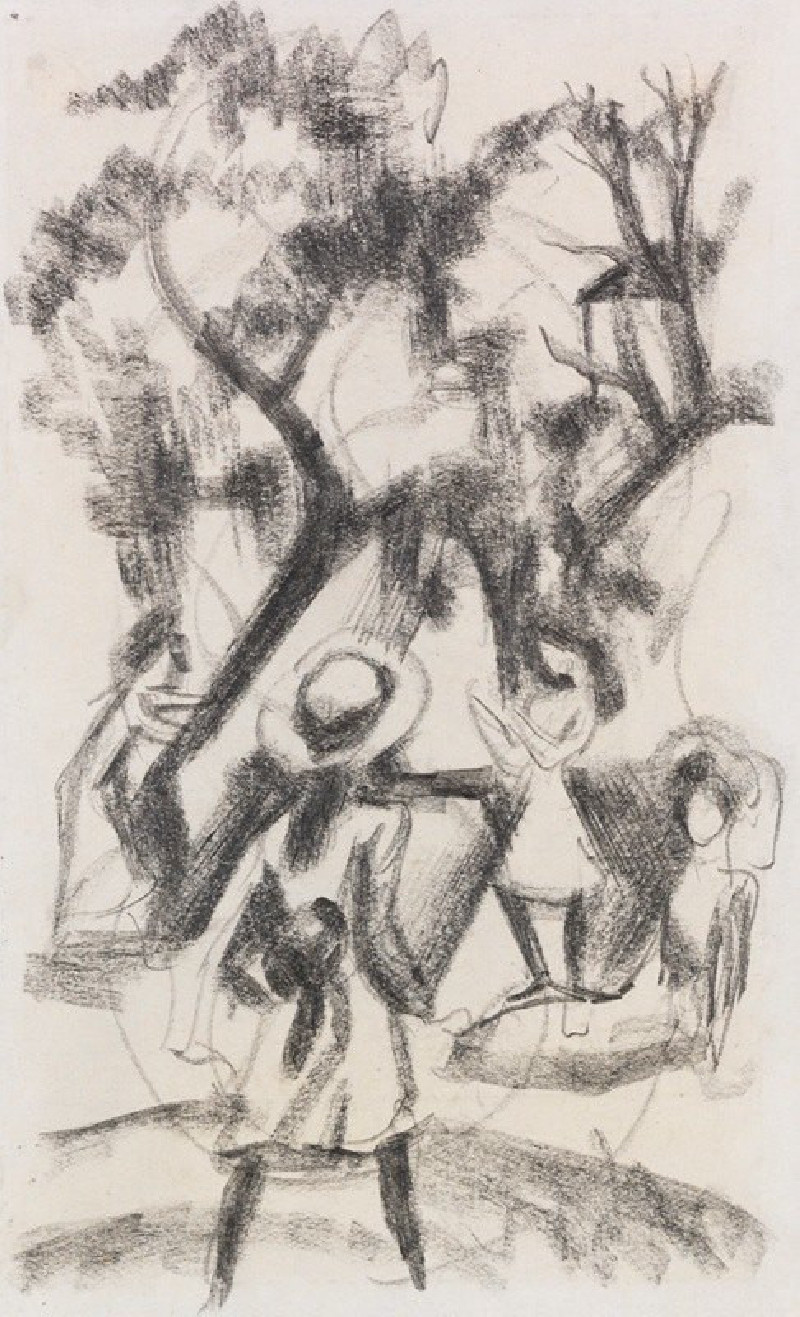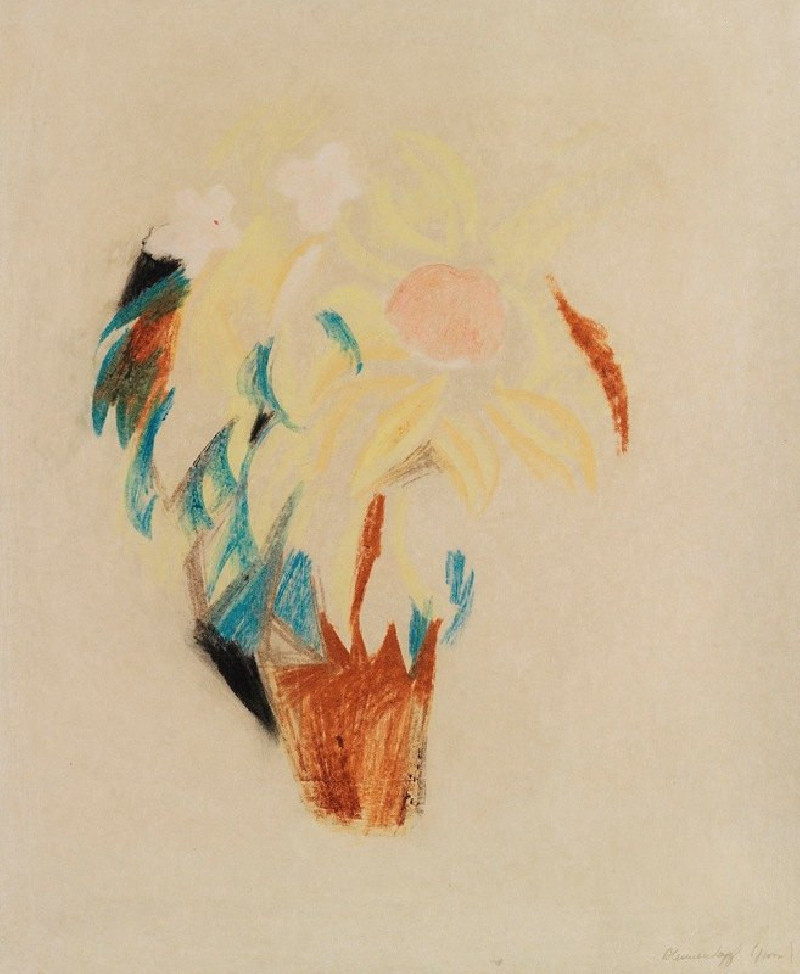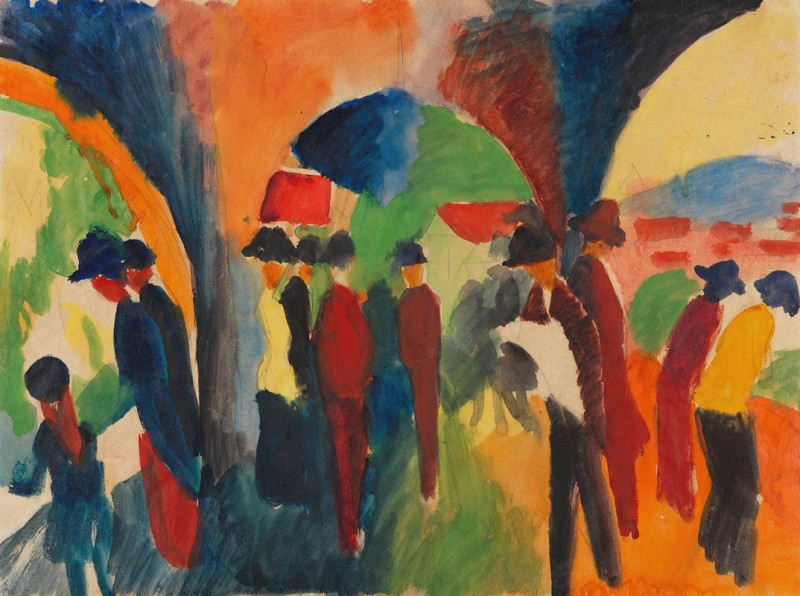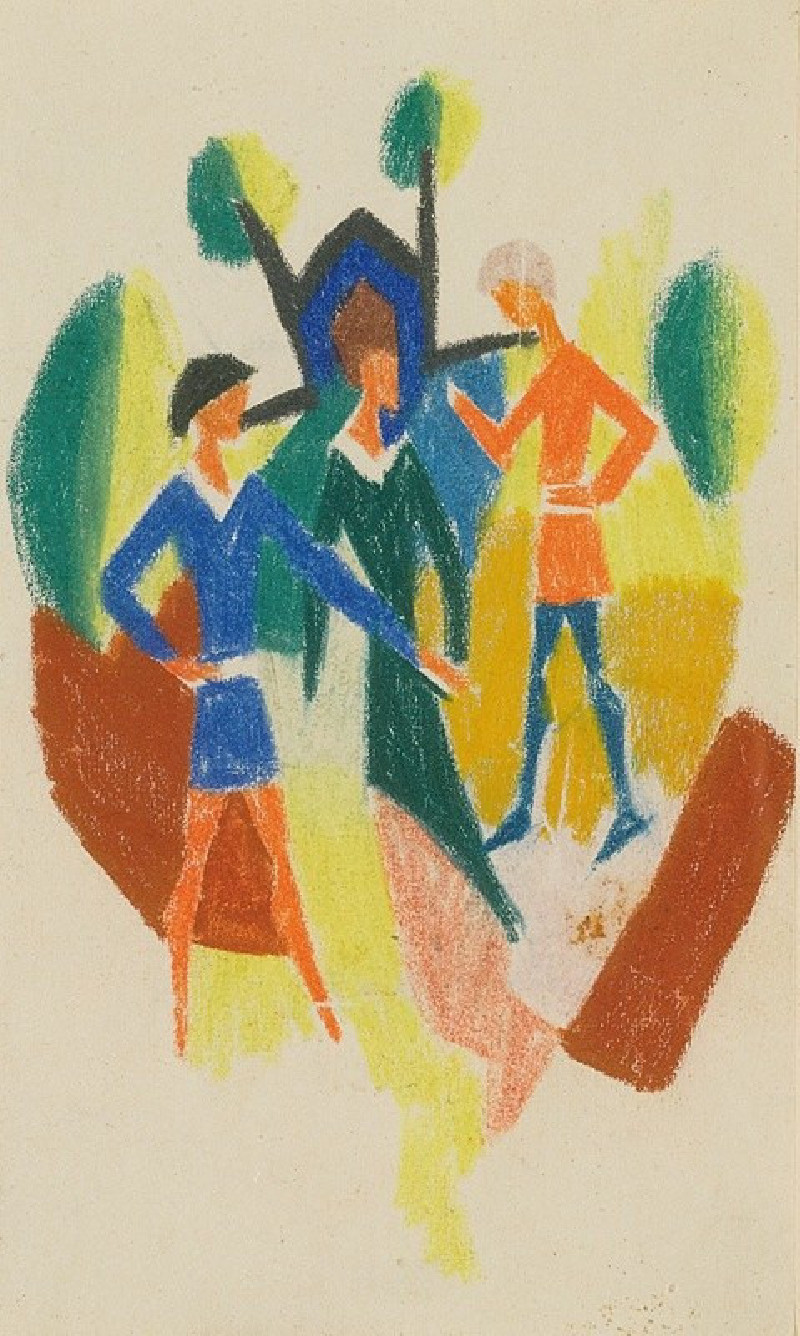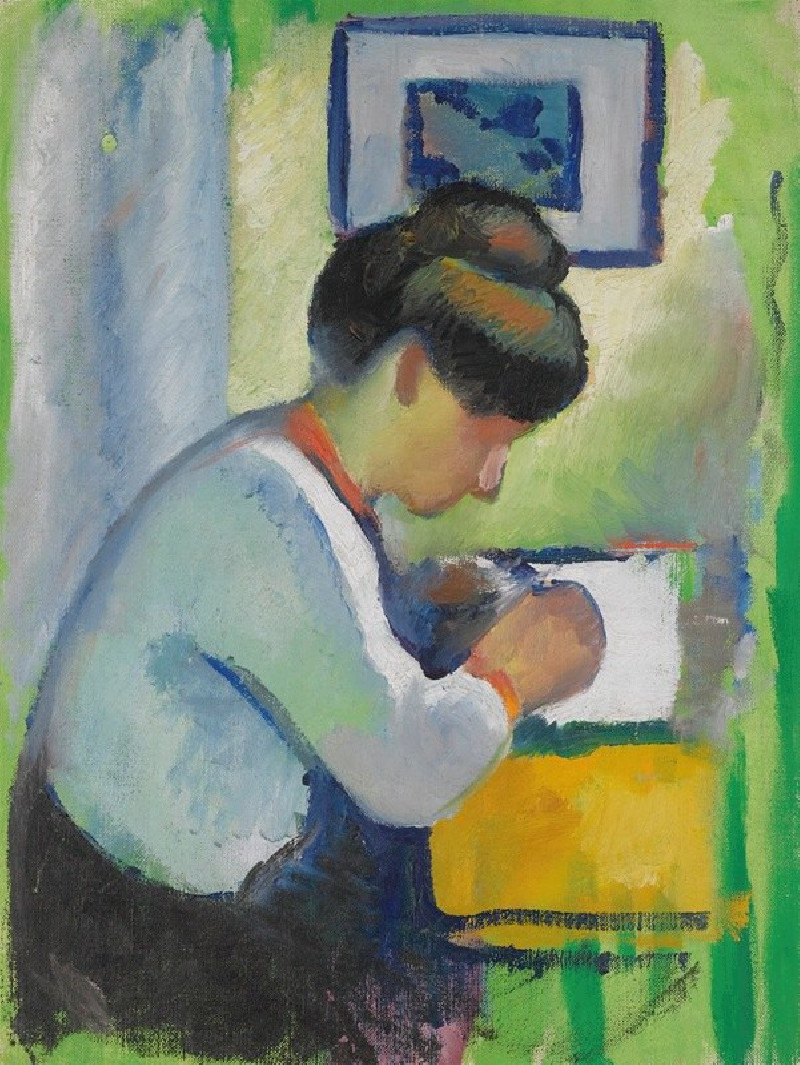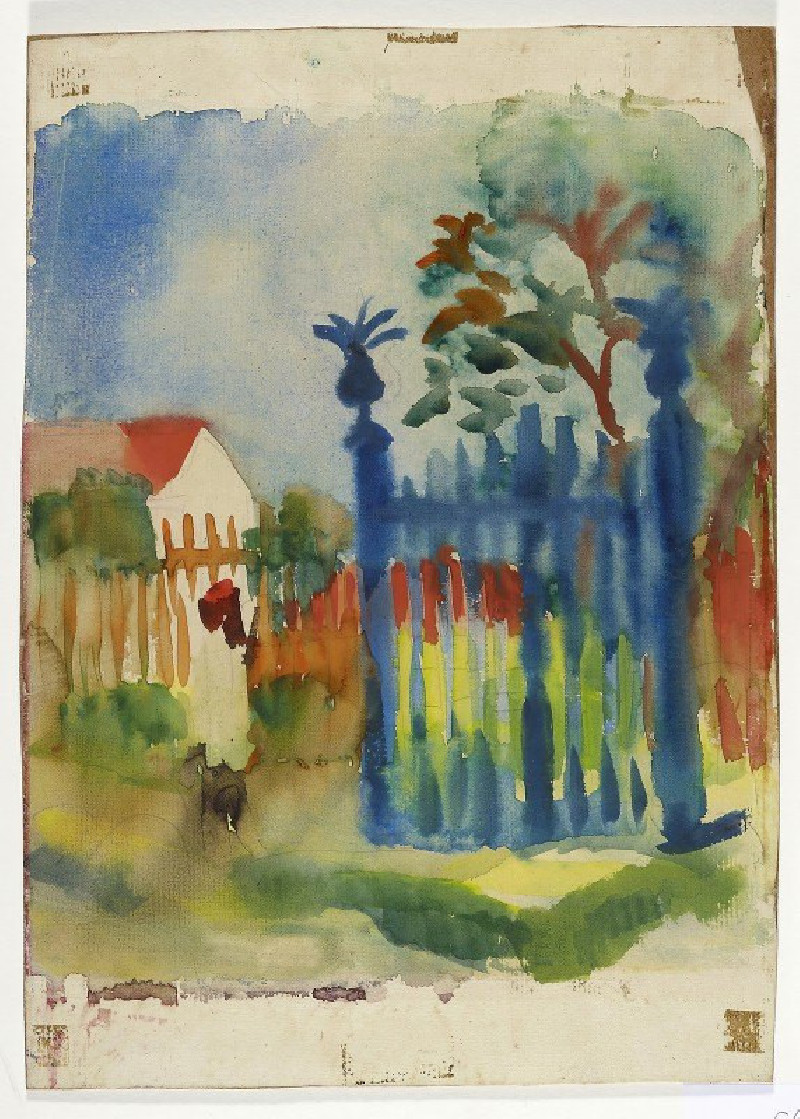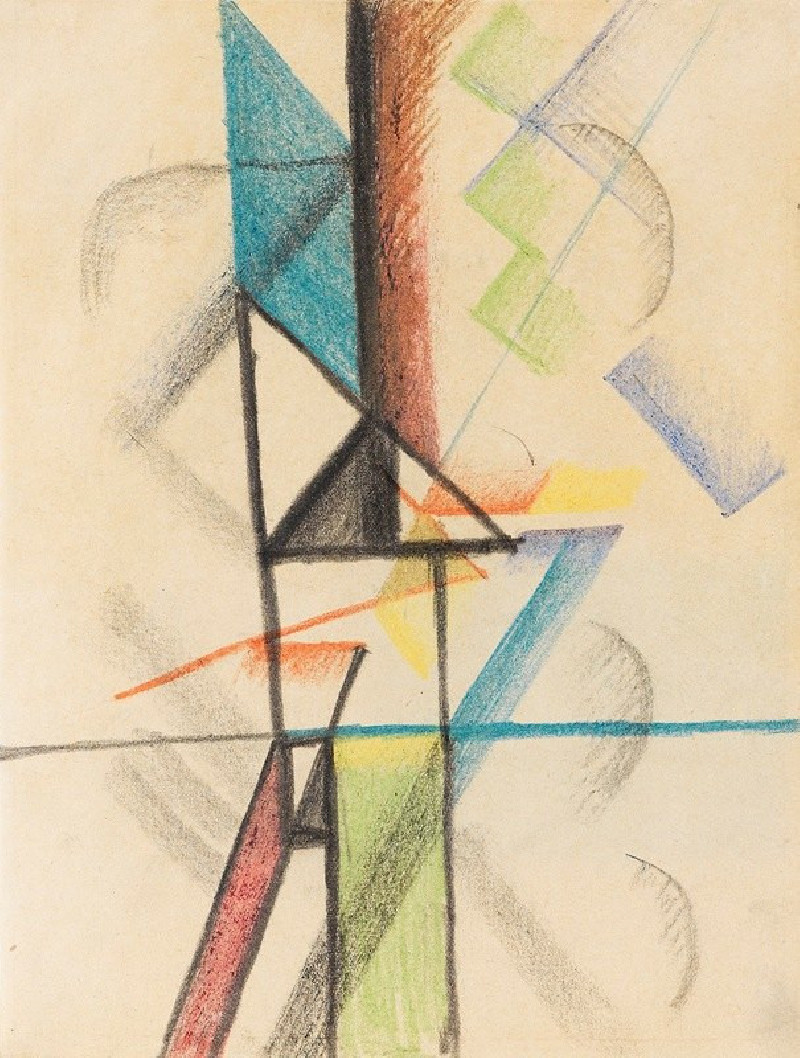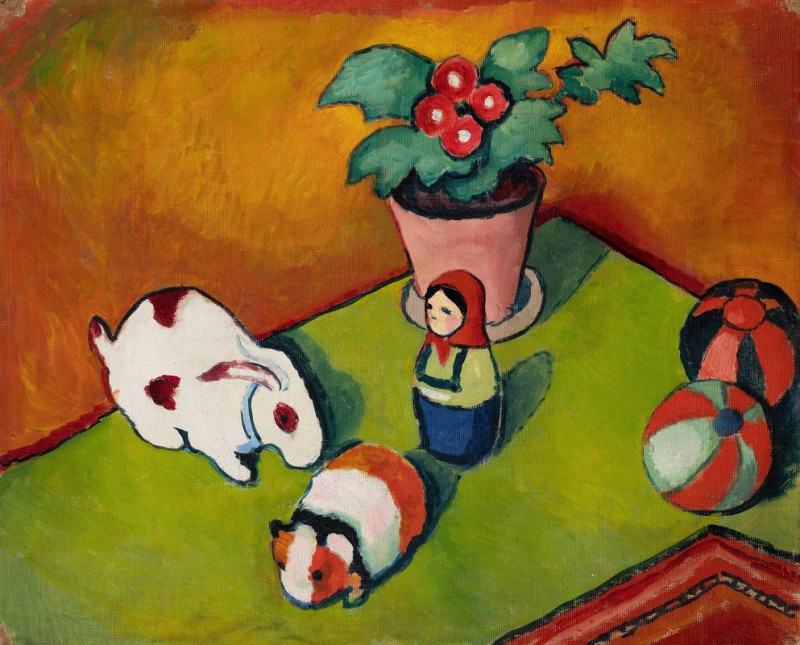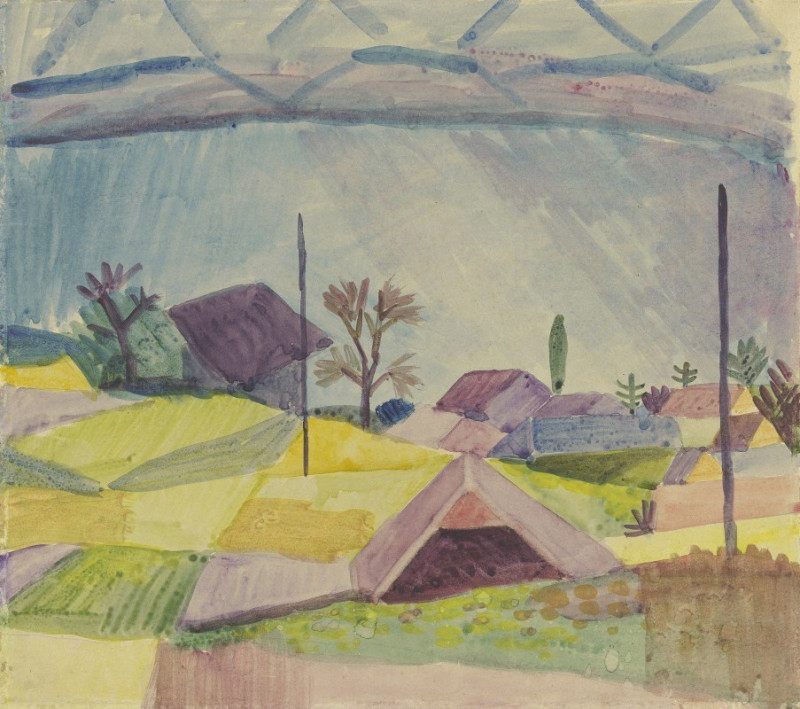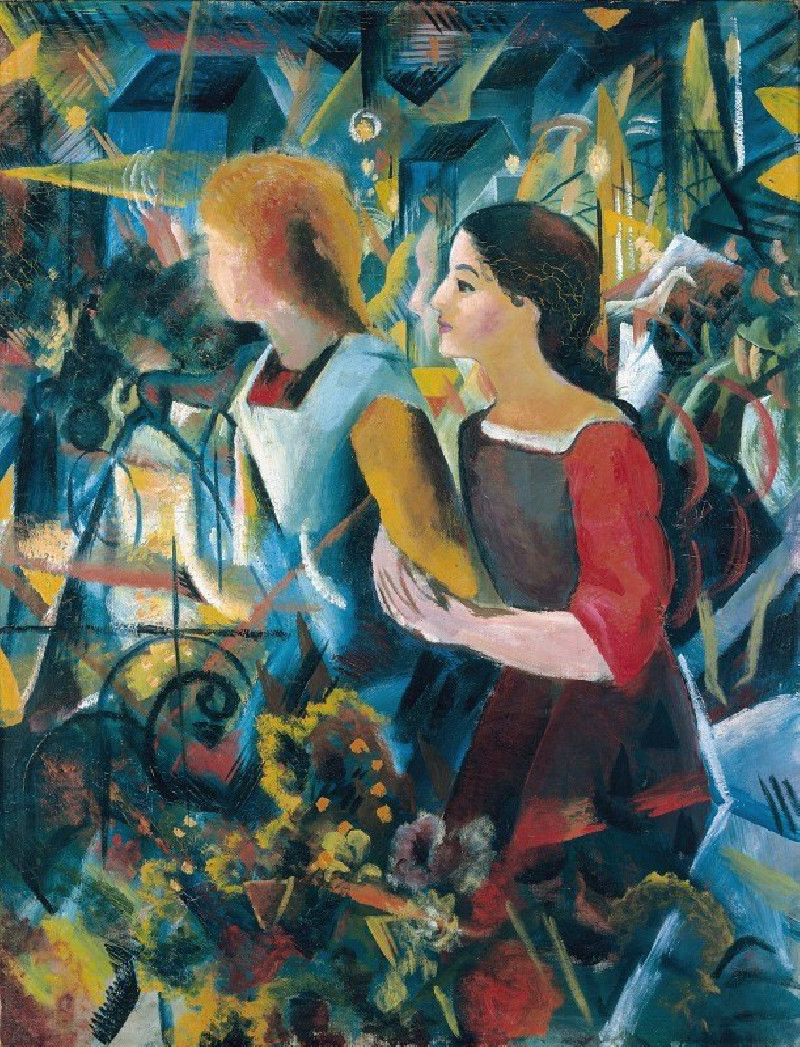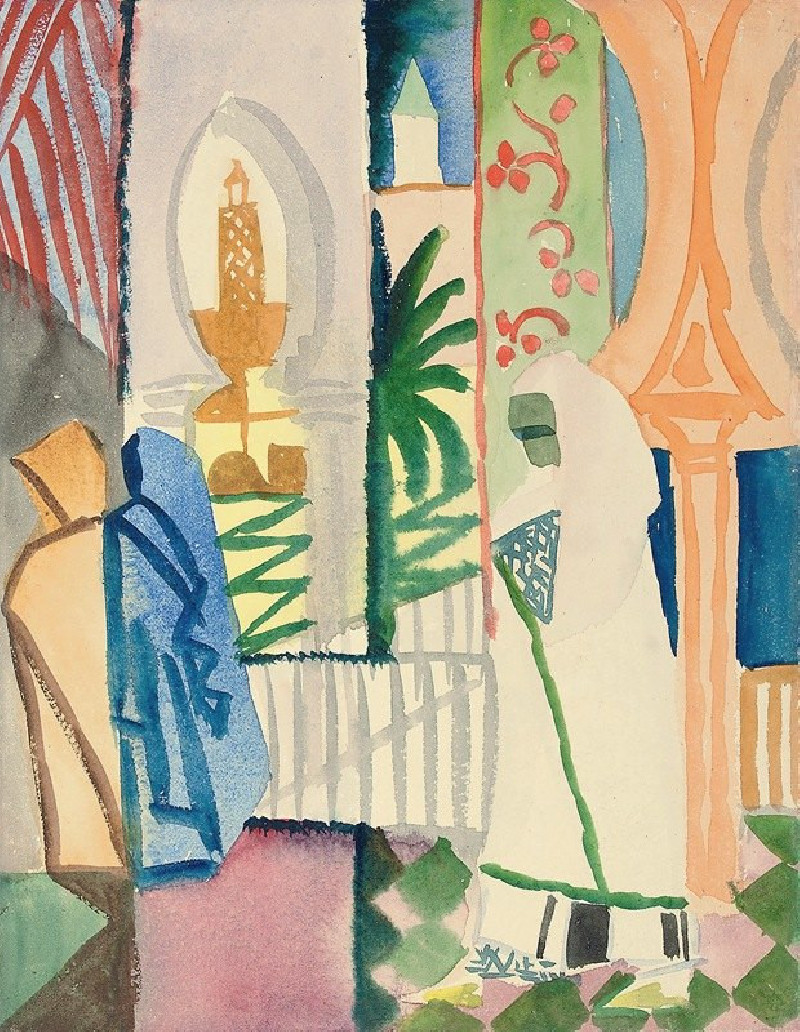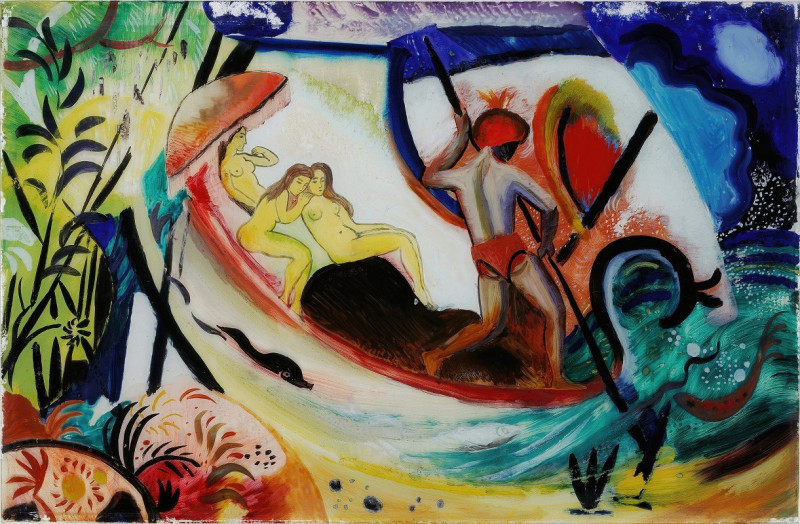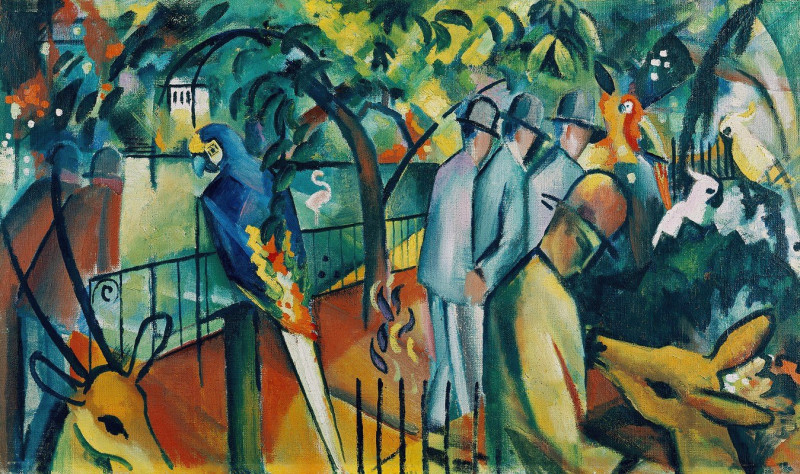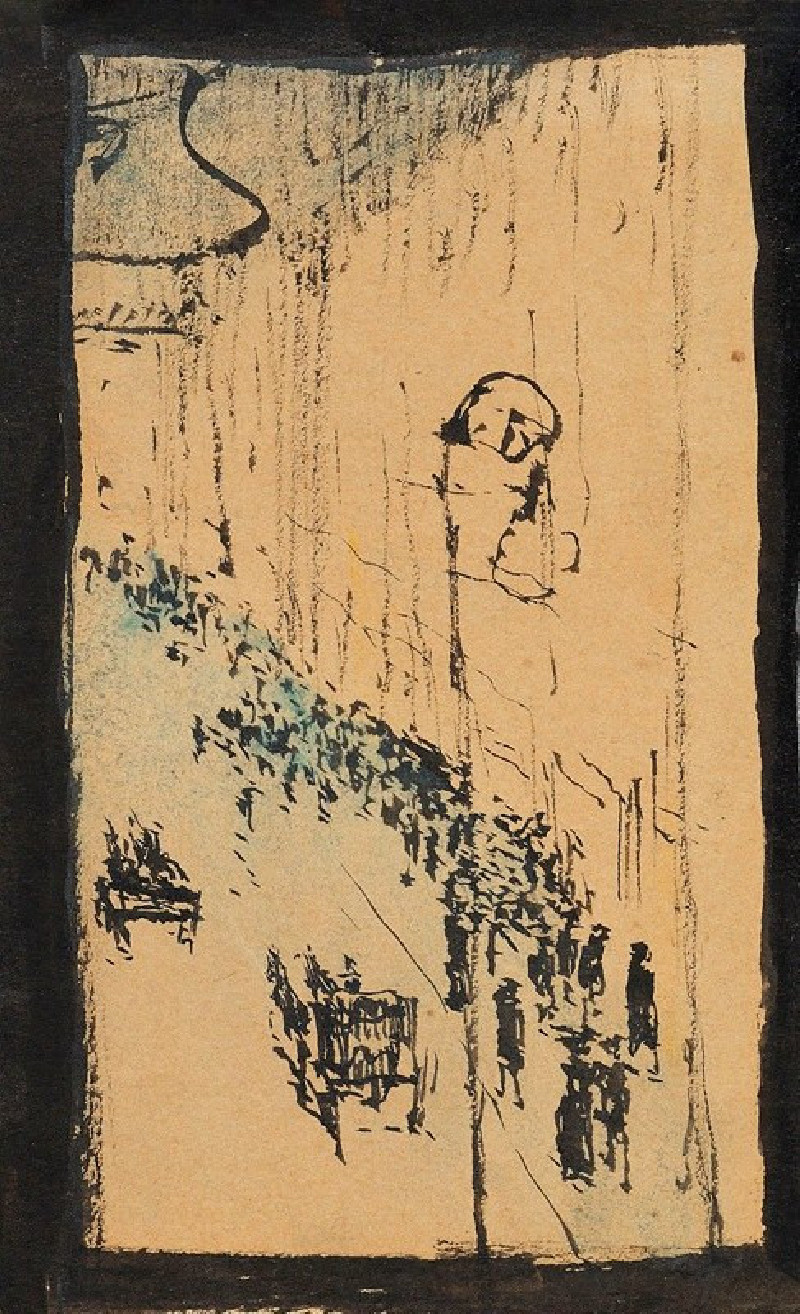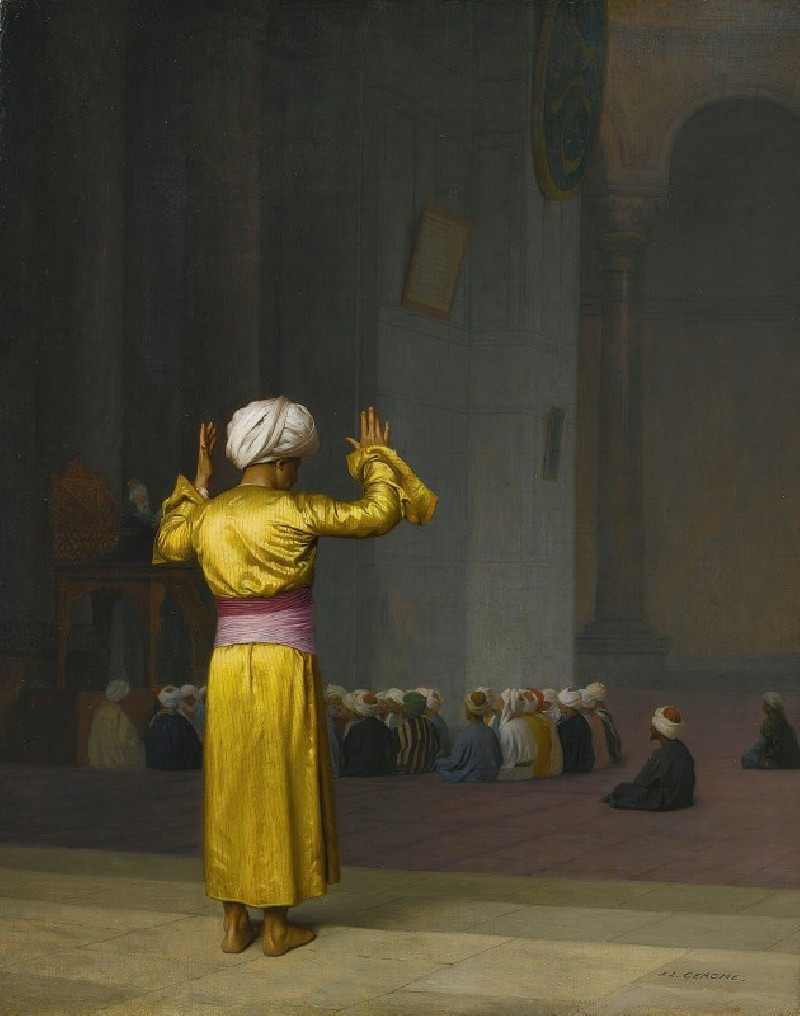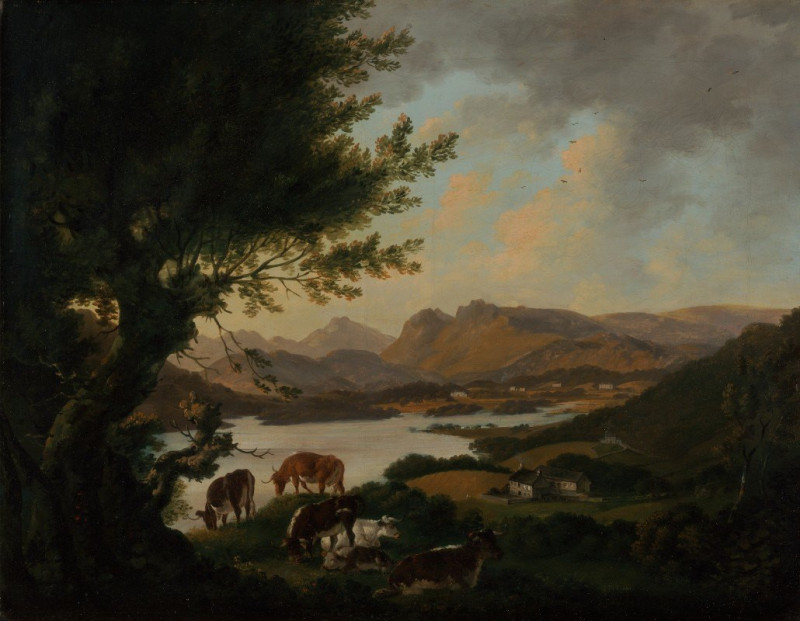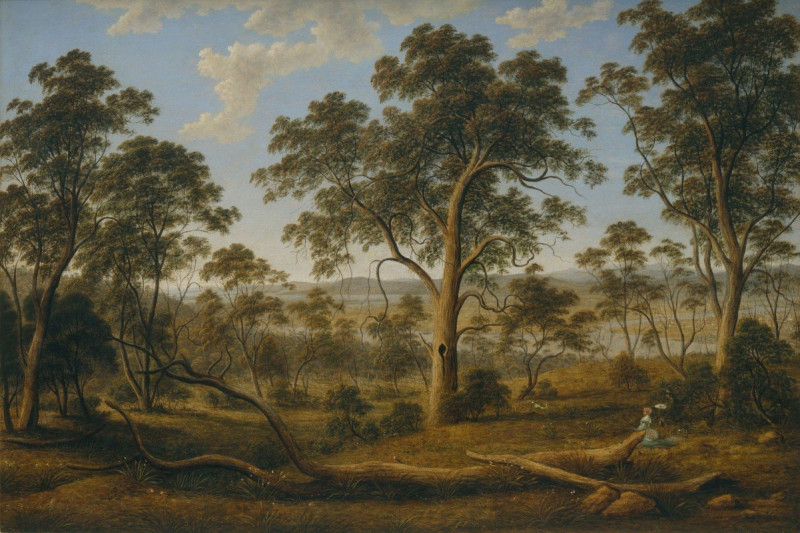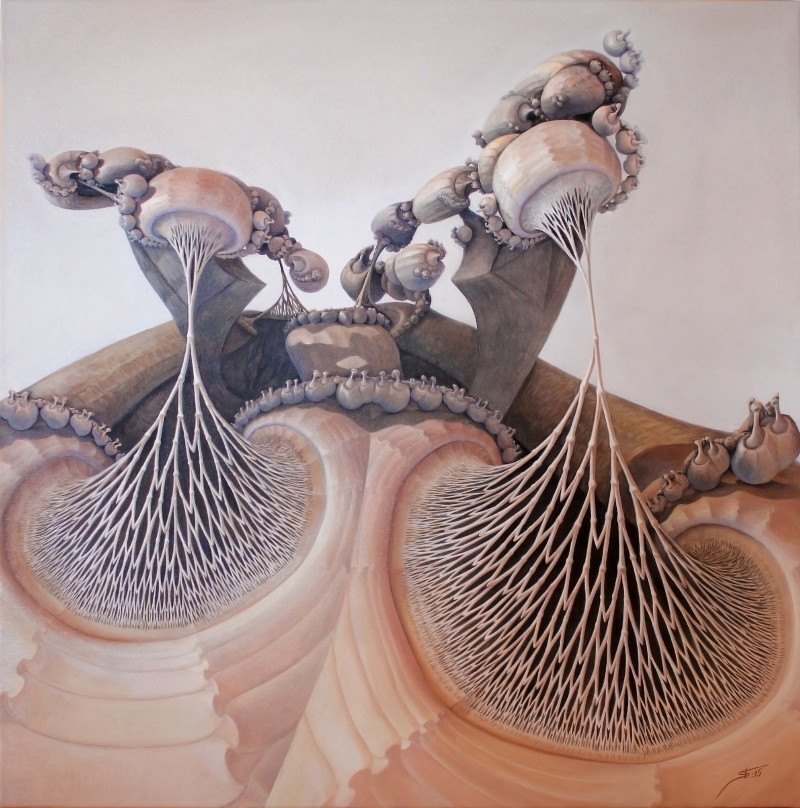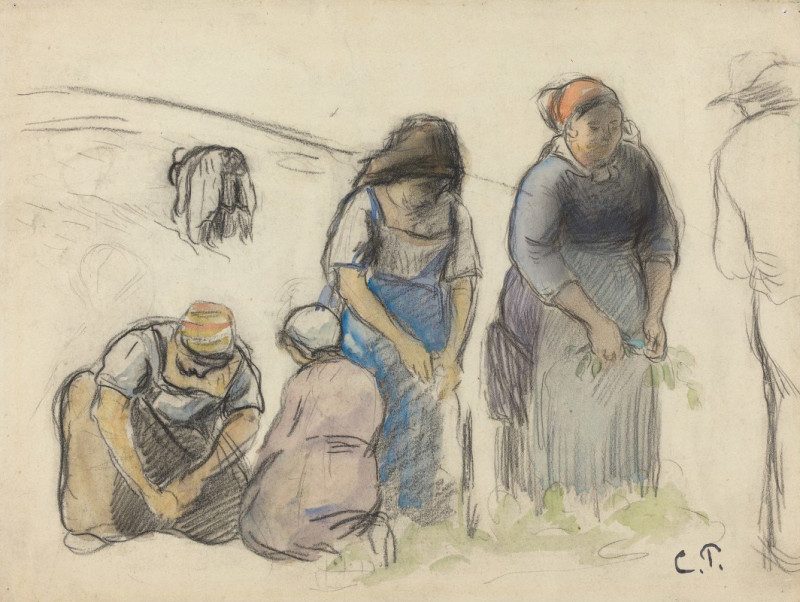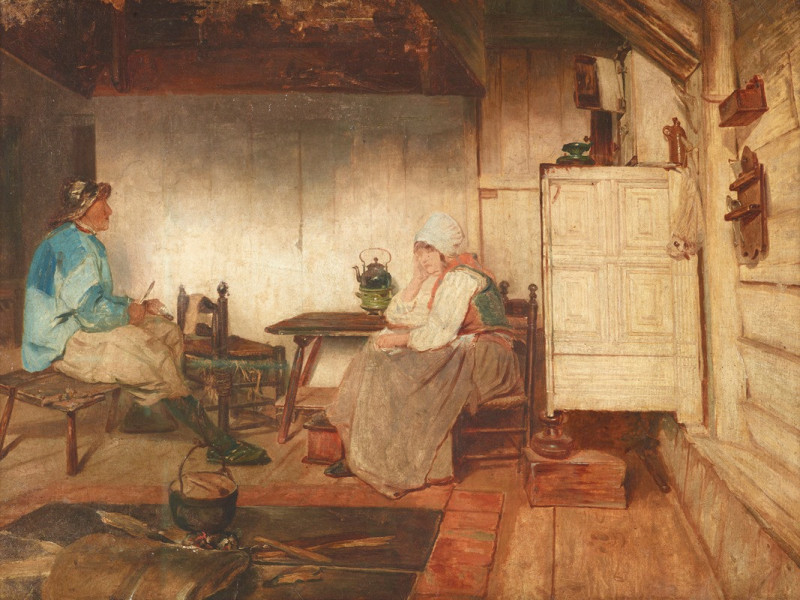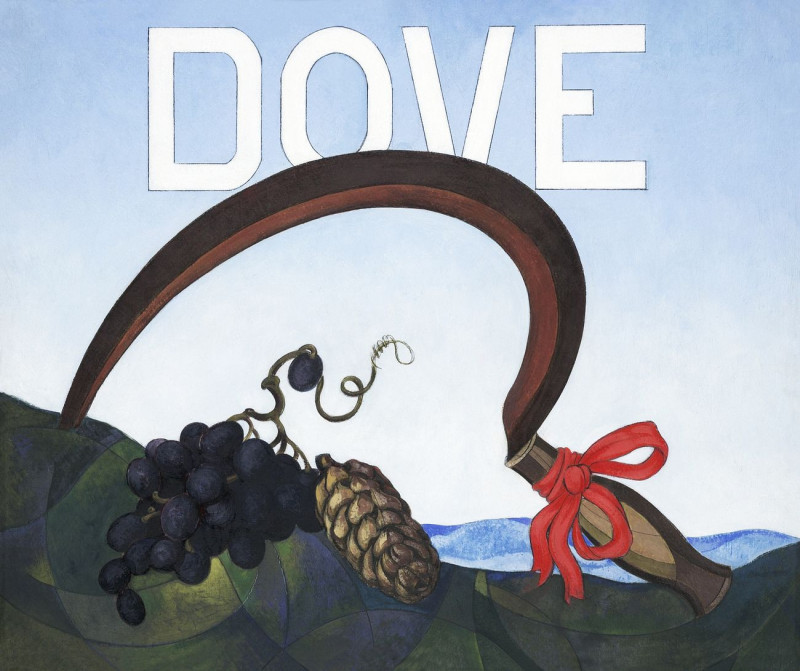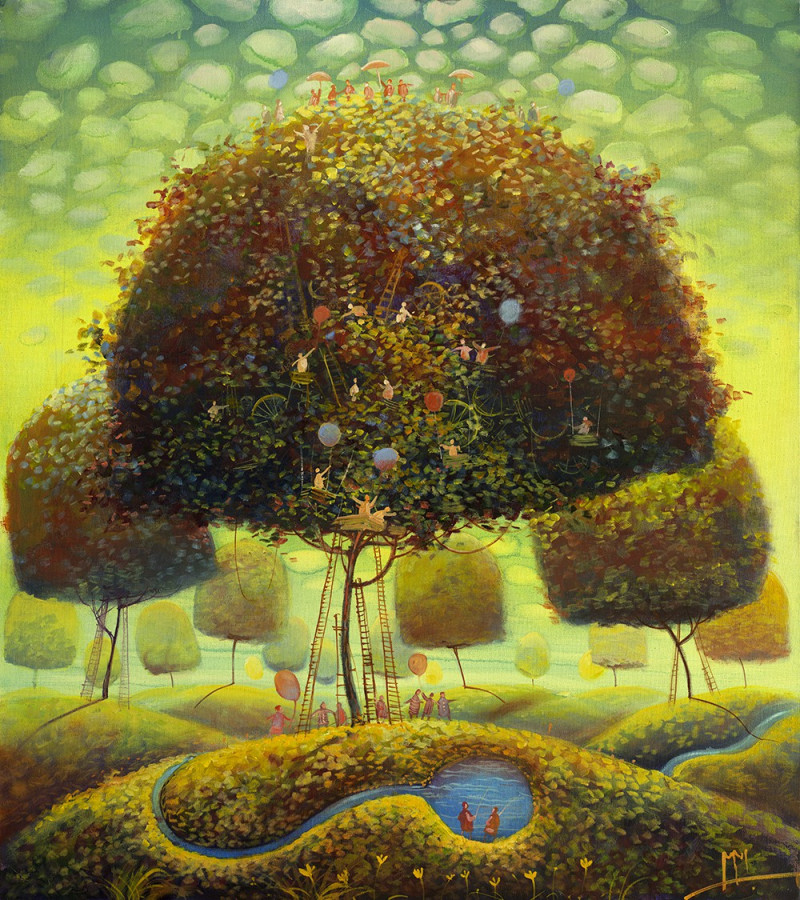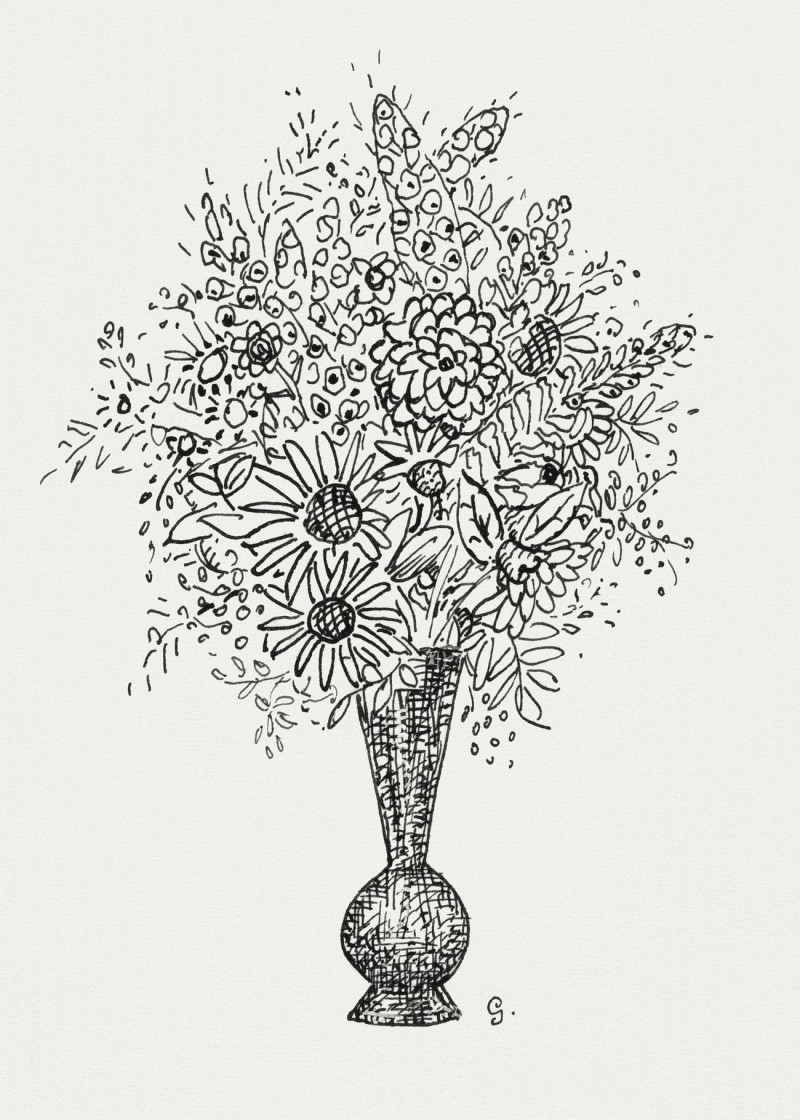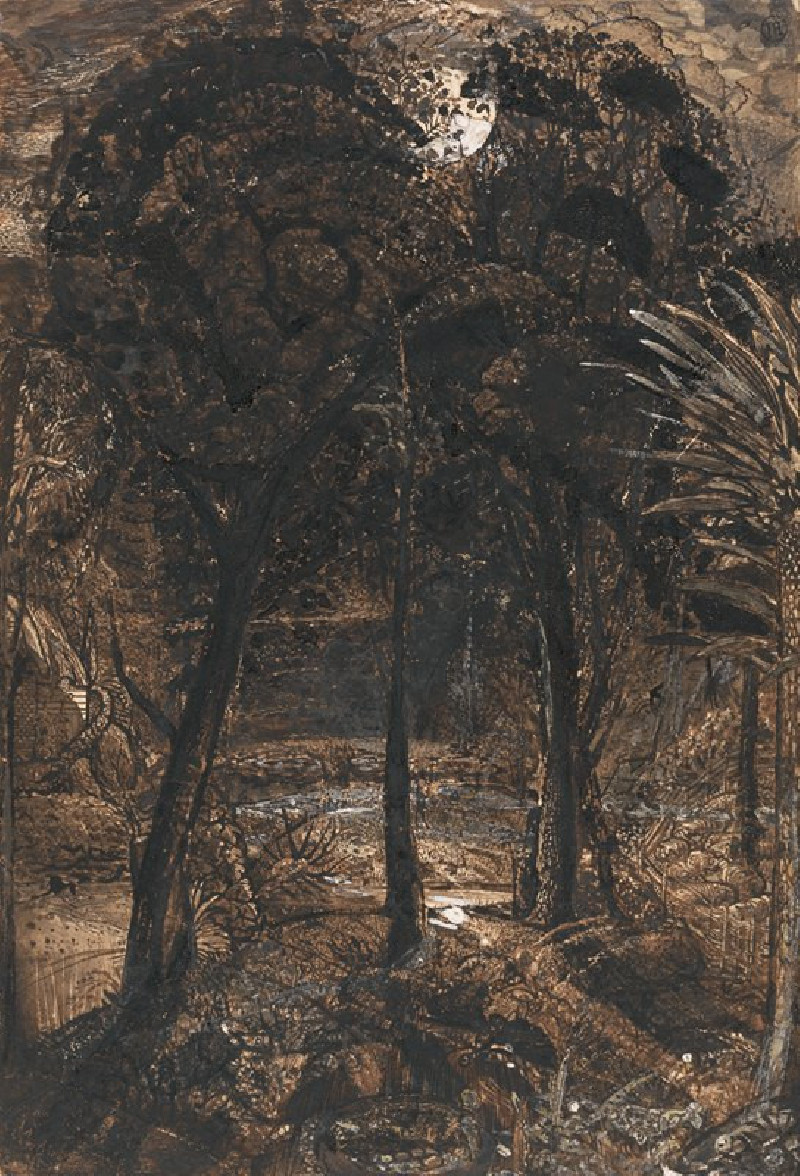Türke und Europäer (1914)
Technique: Giclée quality print
Recommended by our customers
More about this artwork
In the evocative sketch "Türke und Europäer" (1914) by German artist August Macke, the viewer is privy to an elegant display of cultural intersection. This piece, rendered with delicate and precise pencil lines, captures three figures defined by their distinctive attire, suggesting a narrative of diversity and coexistence.The figures are aligned in a subtle, yet dynamic composition, where each individual's back is slightly turned to the viewer, presenting an intriguing sense of movement and anonymity. On the left, a figure dons a wide-brimmed hat, indicative of European fashion of the early 20th century. The central figure, perhaps the "Türke" (Turk), is adorned with what appears to be traditional Ottoman clothing, including a wrapped headscarf, conveying an artistic focus on cultural attire as a form of identity. Finally, the figure on the right merges into the sketch's background, offering a sense of depth and curiosity about their role in this multicultural ensemble.August Macke, known for his vivid use of color and interest in Expressionism, utilises minimalism here to poignant effect. The sketch not only underscores the artist's deftness with simple lines but also his contemplative approach towards the blending of diverse cultures, captured within a fleeting, everyday moment. This piece invites viewers to consider the narratives and relationships that might exist between these figures, encouraging interpretations that reflect Macke's fascination with the social fabric of early 20th-century Europe.
Delivery
Returns
August Macke (3 January 1887 – 26 September 1914) was a German Expressionist painter. He was one of the leading members of the German Expressionist group Der Blaue Reiter (The Blue Rider). He lived during a particularly innovative time for German art: he saw the development of the main German Expressionist movements as well as the arrival of the successive avant-garde movements which were forming in the rest of Europe. Like a true artist of his time, Macke knew how to integrate into his painting the elements of the avant-garde which most interested him.

